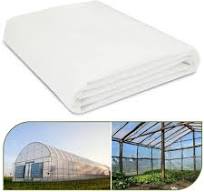Greenhouse plastic plays a pivotal role in modern agriculture and gardening, particularly in regions with diverse climates such as Long Beach, California. As we step into 2025, technological advancements have revolutionized the types of plastic used in greenhouses, making them more durable and efficient than ever.
What is Greenhouse Plastic?
Greenhouse plastic is a specially designed polyethylene film used to cover greenhouse structures. Unlike regular plastic sheets, it is engineered to provide optimal light diffusion, UV protection, and insulation. In 2025, greenhouse plastics are now enhanced with multi-layer coatings and anti-drip technologies, which reduce condensation and improve crop yield. These plastics are available in various thicknesses, commonly ranging from 4 mil to 12 mil, catering to different agricultural needs.
Which Types of Greenhouse Plastic are Most Effective?
Several types of greenhouse plastics are widely used, each with unique properties:
- Polyethylene Film (PE): The most common and cost-effective option. It is available in single-layer and multi-layer variants, providing basic protection and light diffusion.
- Polycarbonate Sheets: Known for their durability and insulation, polycarbonate sheets are ideal for areas with extreme weather conditions.
- Ethylene Vinyl Acetate (EVA): This type offers excellent clarity and superior UV resistance, making it suitable for year-round use.
- Polyvinyl Chloride (PVC): Highly durable with good light transmission but less common due to environmental concerns.
In Long Beach, where coastal weather can bring sudden changes, polyethylene film with UV inhibitors and anti-condensate properties is often the preferred choice.
Who Benefits Most from Using Greenhouse Plastic?
Greenhouse plastic benefits a wide range of users, including:
- Commercial Farmers: Enhanced yield and crop protection.
- Home Gardeners: Extended growing seasons and protection against pests.
- Educational Institutions: Hands-on learning environments for students.
- Community Gardens: Sustainable urban farming initiatives.
In Long Beach, the thriving urban agriculture scene sees extensive use of greenhouse plastic in both small-scale gardens and larger commercial operations.
Where is Greenhouse Plastic Most Effective?
While greenhouse plastic is versatile, it proves especially effective in regions with:
- Variable Climates: Such as Long Beach, where sunny days and cool ocean breezes coexist.
- High UV Exposure: Advanced UV inhibitors in plastics protect plants from sunburn.
- Frequent Rainfall: Anti-drip plastics prevent water droplets from damaging plants.
In coastal areas of California, greenhouse plastic helps balance temperature and humidity, creating an optimal microclimate for diverse crops.
Why Choose Greenhouse Plastic Over Traditional Glass?
The benefits of plastic outweigh traditional glass in several ways:
- Cost-Effective: Greenhouse plastic is significantly cheaper than glass.
- Light Diffusion: Modern plastics offer superior light diffusion, promoting even plant growth.
- Durability: Impact-resistant and flexible, reducing the risk of breakage.
- Ease of Installation: Lightweight and easy to install or replace.
In Long Beach, the affordability and efficiency of greenhouse plastic make it the top choice for growers looking to maximize productivity without high upfront costs.
When is the Best Time to Install Greenhouse Plastic?
In California, the ideal times for installing or replacing greenhouse plastic are late winter and early fall. This timing ensures protection before the peak of extreme weather—whether it’s the hot summer sun or cooler winter temperatures. In 2025, innovations in quick-install systems have made the replacement process faster, minimizing downtime.
How Does Greenhouse Plastic Withstand All Weather?
Greenhouse plastic withstands all weather through:
- UV Stabilization: Prevents degradation from sun exposure.
- Thermal Insulation: Retains heat during cooler months.
- Anti-Condensation Treatments: Reduces internal moisture buildup.
- High Tensile Strength: Resists tearing in strong winds.
New materials in 2025 also incorporate nano-coatings that further enhance durability, making them ideal for Long Beach’s mix of sunny days and coastal storms.
Whose Responsibility is it to Maintain Greenhouse Plastic?
Maintenance is crucial for longevity. Typically, the responsibility falls to:
- Farm Owners: Regular checks and timely repairs.
- Garden Managers: Overseeing installation and upkeep.
- Home Gardeners: Periodic cleaning and minor fixes.
Educational workshops in Long Beach often offer training on best practices for maintaining greenhouse plastics, helping growers extend their lifespan and maintain efficiency.
Conclusion: The Future of Greenhouse Plastic in Long Beach
As we navigate 2025 and beyond, greenhouse plastic remains indispensable for sustainable agriculture in Long Beach, California. Its adaptability, cost-effectiveness, and continuous innovation make it ideal for all-weather conditions. Whether you are a home gardener or a commercial farmer, investing in high-quality greenhouse plastic ensures a resilient, productive growing environment, no matter what the weather brings.
 :
https://www.pinterest.com/greenhouseplastic/
:
https://www.pinterest.com/greenhouseplastic/

